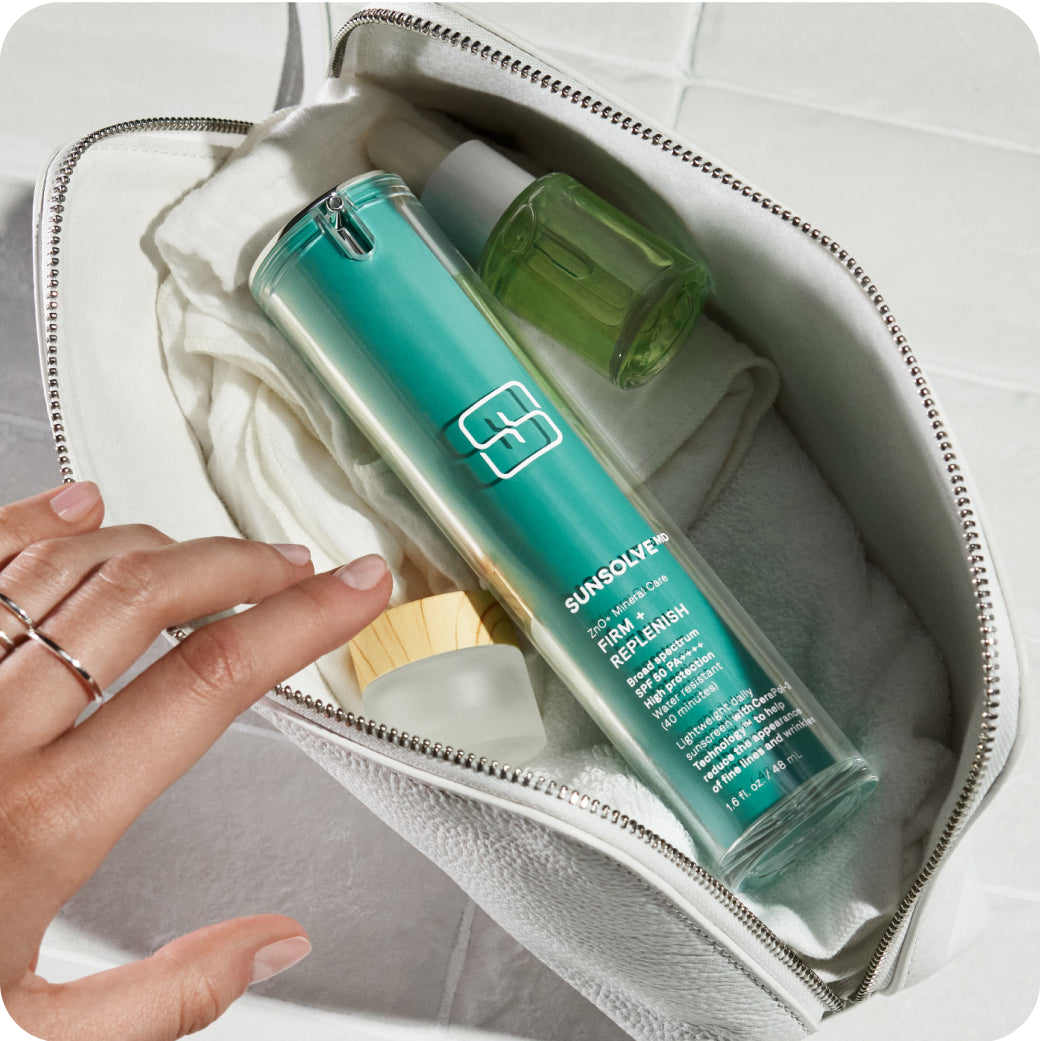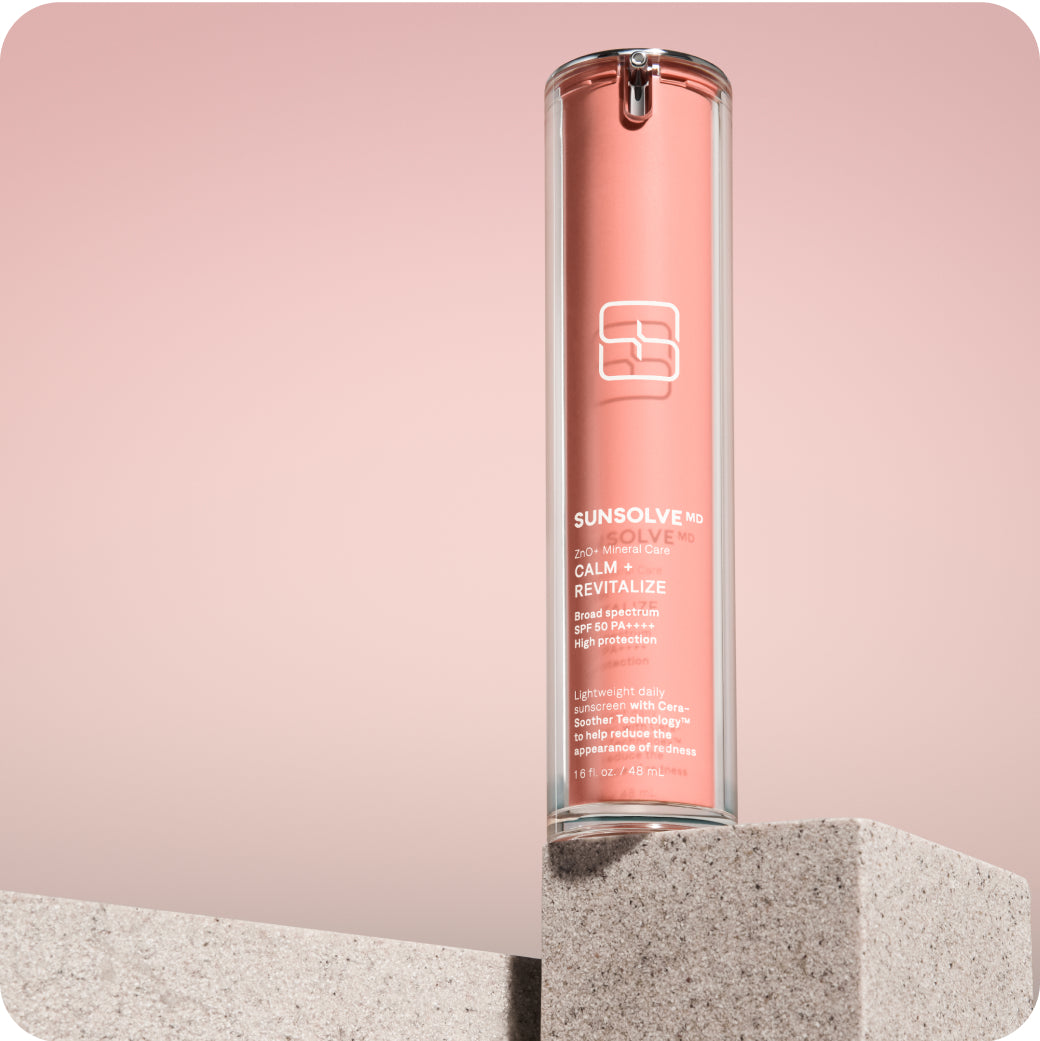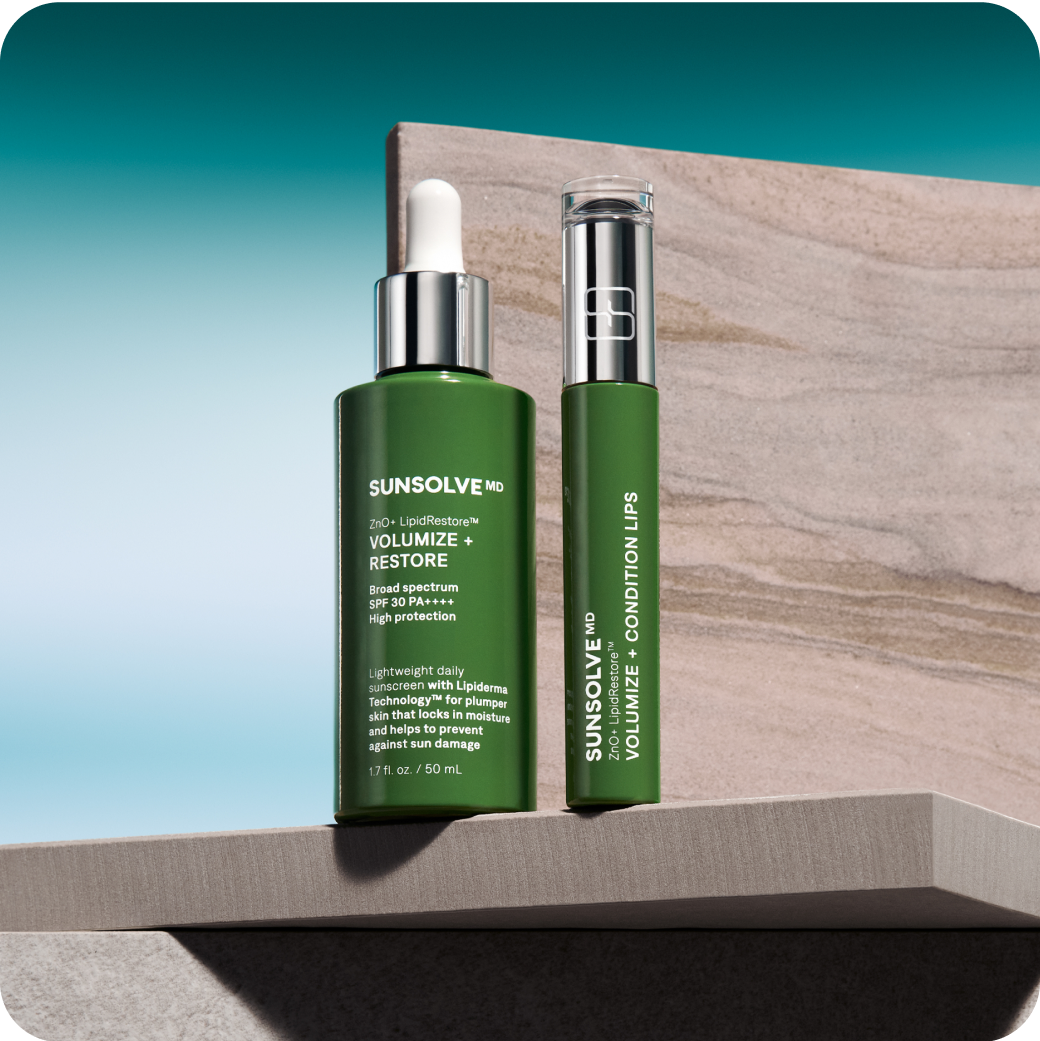Wrinkles and sagging skin
Collagen dominates skincare conversations, and for good reason. As the most abundant protein in your body, it’s responsible for keeping your skin firm, plump and resilient. But like many biological processes, its production starts to decline as we age, decreasing from your mid-20s and accelerating post-menopause due to a drop in estrogen. One of the fastest ways to deplete it is excessive sun exposure.
UVA penetrates deep into the dermis, where they impair the function of collagen-producing fibroblasts. Exposure not only breaks down existing collagen but slows production of it too, leading to accelerated signs of aging like fine lines, wrinkles and sagging. Over time, chronic sun exposure can cause the skin to become thickened and leathery: a condition known as solar elastosis. This thickening comes from the degeneration and abnormal accumulation of elastin fibers, giving the skin an uneven, furrowed texture.
Your Solve:
To help improve firmness and support collagen-depleted skin, opt for our Firm + Replenish and Firm + Replenish Eyes sunscreen, both enriched with barrier-supporting ceramides and our skin-plumping Lipiderma TechnologyTM.
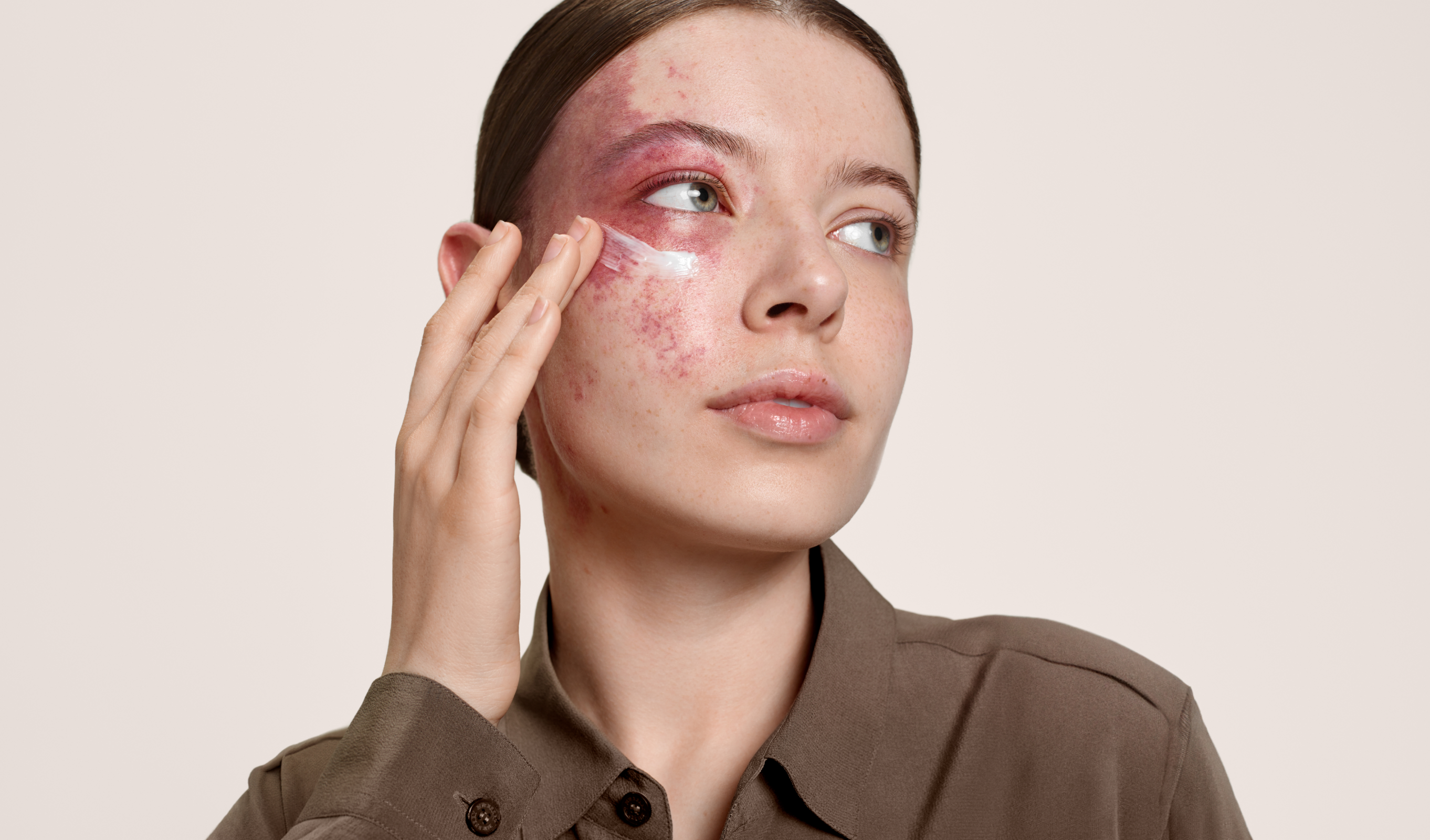
Inflammation, redness and broken capillaries
Sun exposure doesn’t just age your skin, it also irritates it. Chronic exposure can trigger a cascade of inflammatory responses that can compromise the skin’s barrier function and leave you feeling sensitive, flushed and reactive, particularly in those with rosacea-prone skin. For many, this appears as visible redness and broken capillaries (also known as telangiectasia) in areas frequently exposed to the sun such as the nose, cheeks and chest. This occurs when inflammation weakens capillary walls, causing them to break and become permanently visible.
Your Solve:
To soothe reactive skin and visibly calm signs of inflammation and redness, choose our Calm + Revitalize sunscreen, formulated with our comforting Cera-Soother TechnologyTM.
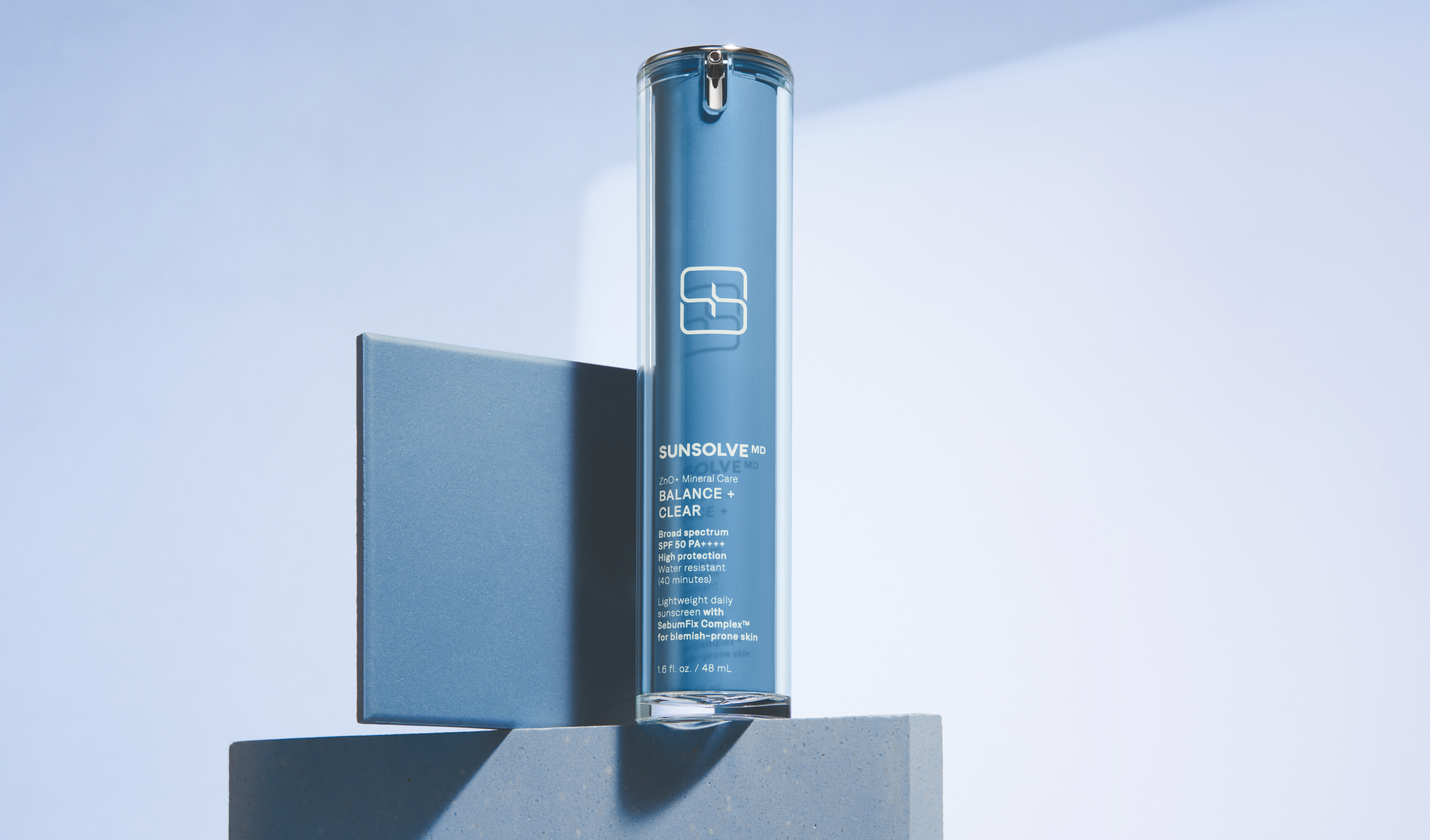
Hyperpigmentation and uneven skin tone
Melanin is the skin’s natural pigment responsible for your skin tone, produced by specialized cells called melanocytes. While it’s always present in the skin, exposure to UVB radiation can stimulate melanin production as a protective response. Its primary role is to absorb and disperse harmful UV rays, but when this process becomes overactive, it can lead to issues like dark spots, uneven skin tone and melasma. These pigmentation issues are notoriously stubborn and challenging to treat, usually requiring a combination of treatments to improve their appearance.
The more melanin you have, namely eumelanin (a type of melanin predominant in deeper skin tones) the darker your skin. However, this natural protection doesn't block out all UV rays, putting to bed the myth that darker skin doesn’t require sunscreen and further emphasizing the need for daily application.
In fact, darker skin tones have larger, more hyperactive melanocytes, which means that any trauma to the skin (be that inflammation from sun exposure or a breakout), will trigger them to go into overdrive and produce excess melanin. This is called post-inflammatory hyperpigmentation.
Your Solve:
Clinically proven to even your skin tone, opt for our Correct + Fade sunscreen, powered by brightening alpha-arbutin and niacinamide. Or, choose your desired shade from our ZnO+ AntiOxTint™collection for a tinted mineral SPF ideal for uneven and melasma-prone skin.

More than skin deep
While aesthetic skin changes are the most immediately noticeable, the deeper risks lie in DNA damage. UVB rays harm skin cells at a genetic level, leading to mutations that can cause skin cancer. UVA worsens the situation by creating oxidative stress. Think of this as internal rusting: it weakens your skin from the inside out, making it harder for your skin to heal properly, alongside breaking down collagen and accelerating aging. A stark reminder that it’s not only the damage you can see that you need to shield your skin from.
Skin cancer can manifest as irregularly shaped moles, asymmetry, uneven color, or moles that grow in size or start to itch, bleed, or become painful. Keep an eye out for these changes as early detection can be life-saving.
Your Solve:
Wearing and reapplying sunscreen daily.
Discover our collection of next-generation mineral sunscreens that combine zinc oxide sun protection with results-driven actives—so you can protect and correct with every application.
References
Flament F, Bazin R, Laquieze S, Rubert V, Simonpietri E, Piot B. Effect of the sun on visible clinical signs of aging in Caucasian skin. Clin Cosmet Investig Dermatol. 2013 Sep 27;6:221-32. doi: 10.2147/CCID.S44686. PMID: 24101874; PMCID: PMC3790843.
Heng JK, Aw DC, Tan KB. Solar elastosis in its papular form: uncommon, mistakable. Case Rep Dermatol. 2014 Apr 24;6(1):124-8. doi: 10.1159/000362589. PMID: 24926253; PMCID: PMC4036135.
Brenner M, Hearing VJ. The protective role of melanin against UV damage in human skin. Photochem Photobiol. 2008 May-Jun;84(3):539-49. doi: 10.1111/j.1751-1097.2007.00226.x. PMID: 18435612; PMCID: PMC2671032.
https://www.skincancer.org/blog/are-people-of-color-at-risk-for-skin-cancer/

